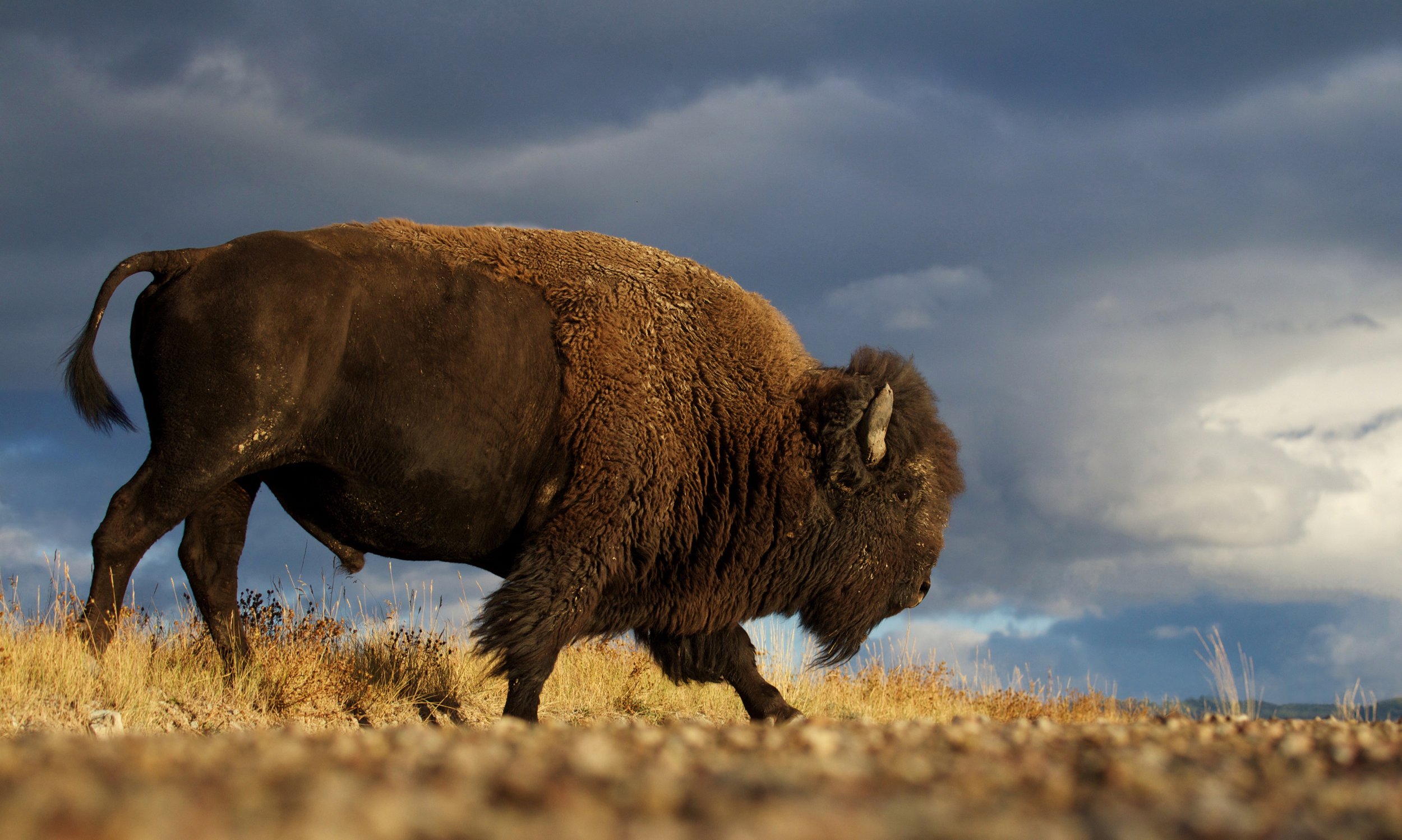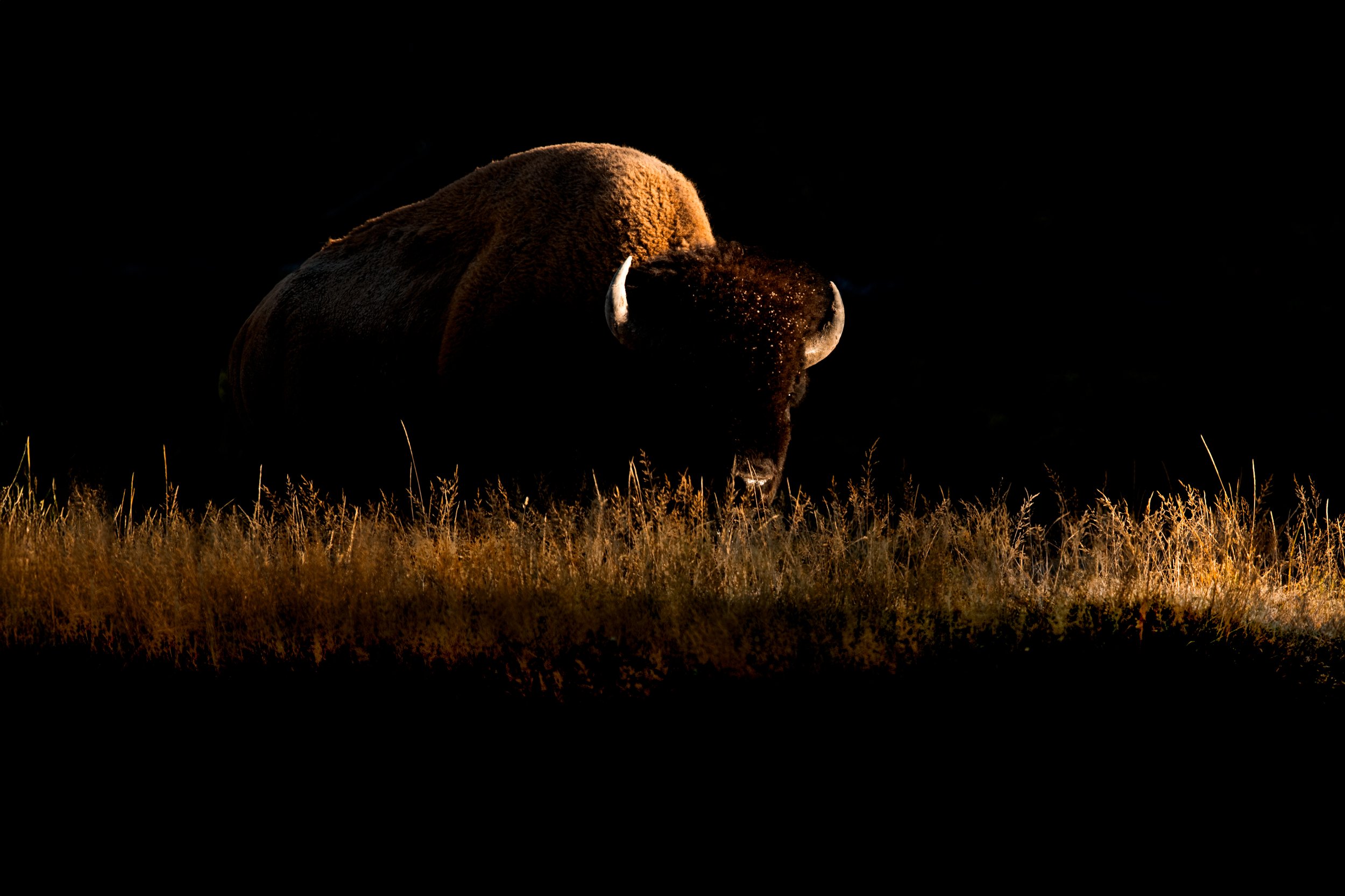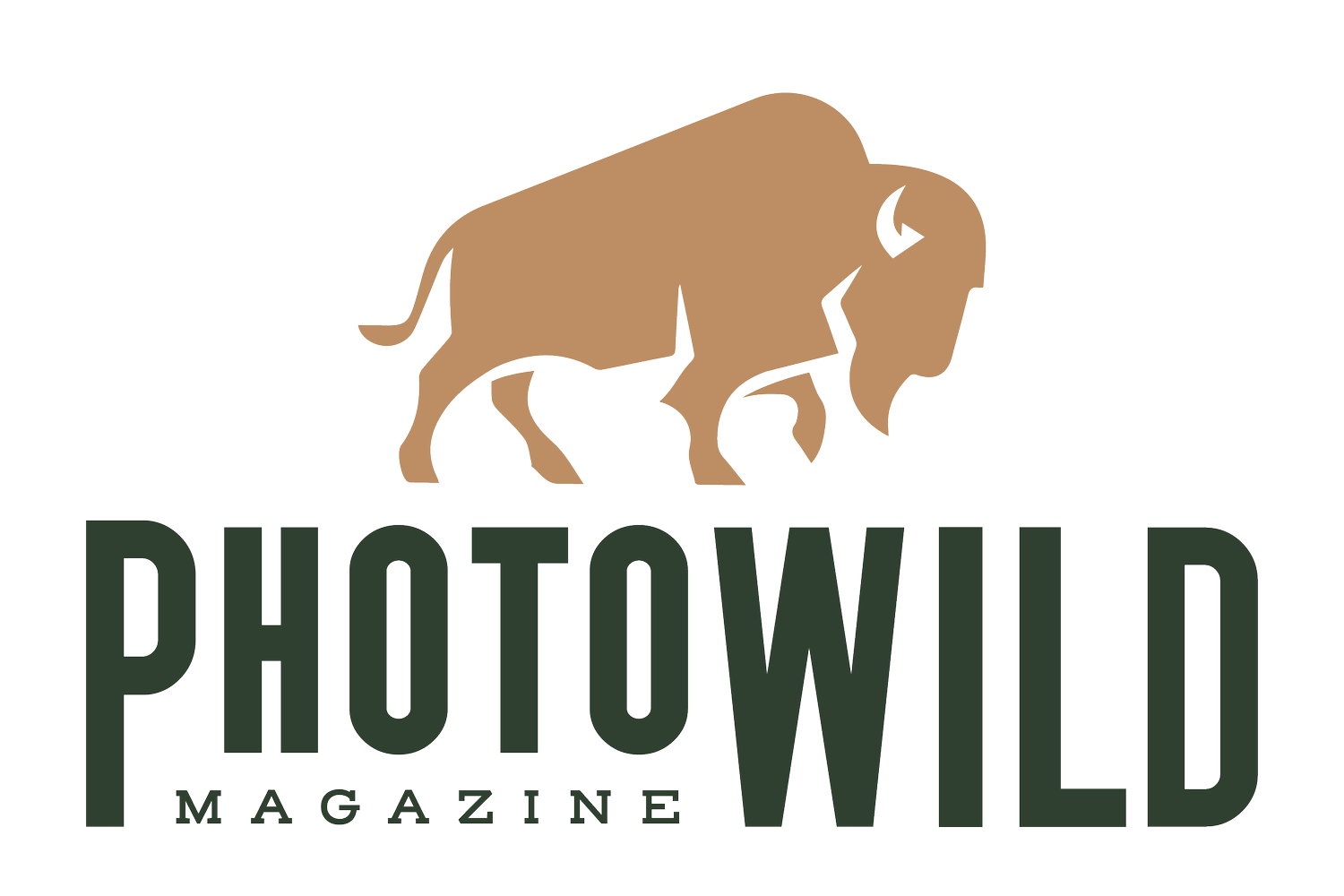
A Wildlife Photographer’s Guide to the Bison Rut
Fieldcraft, Behavior, and Conservation on the Prairie
Written by Jared Lloyd, founder and editor of PhotoWILD Magazine
Before we can talk about these animals, we need to get one thing straight: they are not, and never were, buffalo.
The word buffalo has been stamped into American culture through the buffalo nickel, Buffalo Bill Cody, Buffalo, New York, and even buffalo burgers. Generations of Americans have used the term without a second thought, but scientifically and historically, it’s incorrect. North America never had true buffalo, which are distant cousins of bison – two distinct genera that diverged millions of years ago. The water buffalo (Bubalus bubalis) of Asia and the African buffalo (Syncerus caffer) are animals adapted to very different environments. In the Western Hemisphere it's Bison bison, the largest land mammal in the Americas.
Bison aren’t simply a shaggy horned cow with a bad temper. They’re one of the last survivors of the Ice Age megafauna that dominated the North American plains, an animal shaped by the relentless forces of open grasslands, predators, and cycles of feast and famine. At their peak, somewhere between 30 and 60 million bison thundered across the prairies in herds so vast they darkened the horizon. The sound of their passage – a rumbling tide of hooves and dust – was said to make the earth tremble, leading early explorers to refer to them simply as thunderbeasts.
Those herds are now gone. Today, only around 20,000 still exist in the wild across various national parks and preserves.
The bison rut is the earliest of all ungulates on the continent. By late July and early August, hormonal changes begin to transform the herds. Testosterone surges through the bodies of mature bulls as shortening days signals the start of breeding season. Throughout the rest of the year, bison live in sex-segregated groups. Cows, calves, and young bulls form the vast herds that visitors most often see in places like Yellowstone or the Badlands. Adult bulls, however, spend most of the year either alone or in small bachelor groups away from the herds.
But the rut changes all that. Driven by the ancient evolutionary imperative to breed, the bulls emerge from solitude and return to the herds. They arrive thick-necked and heavy with muscle, their coats matted from wallows and dust, bellies stained from urine-soaked dirt. They are full of swagger. Their eyes are bloodshot, and their bellows, that can carry for miles, begin to ripple across the grasslands.
This is not merely a mating season. It is a tournament in the purest sense. Fewer than one in ten bulls will sire any calves in a given year, and among those, a single dominant bull may father half the calves in a herd. The stakes are unimaginably high, and the battles that determine reproductive success are brutal. Yet the ritual persists, a crucible that has shaped the species for millennia.

The Annual Cycle
For a species shaped by the vastness of the plains, the bison’s life is a continual negotiation between energy and opportunity. The harsh winters and fleeting summers of North America’s interior grasslands impose a rhythm that governs their physiology, social structure, and breeding behavior.
Unlike some ungulates that live in mixed herds year-round, bison spend most of the year in sex-segregated groups because it is simply more efficient. The cows and calves form the core herds, traveling in large numbers for safety and taking advantage of the best forage. The bulls remain separate, occupying less productive edges of the range. This separation reduces competition for limited resources during the long winter and spring months when the plains are locked under snow or baked into dust.
This rhythm is reinforced by the biology of both sexes. During winter, bison survival depends on conserving energy and maintaining enough fat reserves to withstand brutal cold and scant forage. Bulls, which carry more muscle and less fat than cows, are especially vulnerable to depletion and injury during the rut, so the rest of the year is a period of recuperation. Cows, meanwhile, sustain pregnancies through winter and calve in late spring, timing their offspring to coincide with the flush of new growth.
By early summer, the cows give birth, usually in late April through May, when protein-rich grasses are just beginning to spring up and while predator pressure is relatively low. Calves, reddish in color and called “red dogs,” grow rapidly, and the herds gradually move toward higher-quality grazing areas as the season progresses. But as days begin to shorten, hormonal triggers occur that are induced by the shifting photoperiod. Testosterone builds. And bulls begin to take on the qualities of elephants in musth - restless, aggressive, and driven by surging hormones.
This seasonal cycle is the product of an evolutionary arms race between climate, predation, and reproductive success. By concentrating breeding into a narrow window when the cows are in peak condition and forage is abundant, bison ensure the highest probability of calf survival. But this also creates intense competition among bulls, a fact that defines every aspect of their rut.
In other words, the annual cycle is not simply a social convenience; it is a survival strategy. The long months of solitude and recuperation allow bulls to amass the energy they will burn during a few brutal weeks of fighting and displaying, and it allows cows to choose mates when their own bodies are best equipped to carry a pregnancy through the winter.
The Rut Begins
By late July, the prairie changes. The sun hardens the grass into brittle stalks, the air thickens with heat and dust, and the bison herds begin to churn with a restless energy that is palpable long before the first clashes erupt.
At first, the reemergence of the big males is understated. Bulls linger at the edges of the herd, grazing and watching, sniffing the air for the scent of cows approaching estrus. But soon their intentions become unmistakable. Their bellowing begins — at first low and sporadic, resonant moans that seem to vibrate through the ground more than the air. As competition intensifies, the calls grow louder, longer, and more frequent. Each bull’s voice is unique, and research has shown that these bellows communicate body size, stamina, and aggression to both rivals and potential mates. The largest, most dominant bulls produce calls of lower frequency and longer duration — an unmistakable acoustic signal of fitness. Remarkably, these calls can carry over three miles across the open prairie, allowing bulls to assert themselves across the herd without immediate confrontation.
When a bull identifies a cow in estrus, he moves in behind her, lowering his head and curling his lip — a behavior known as the flehmen response — to detect pheromones that confirm her readiness to breed. If she’s close to ovulation, he guards her closely, following her movements and driving away rivals. This tending phase can last hours or even days, during which the bull eats little and focuses entirely on guarding her.
Confrontations are inevitable. As challengers approach, they circle each other, pawing at the ground, shaking their massive heads, and snorting clouds of dust. If neither backs down, they charge. Heads lowered, they meet with an impact that echoes across the plains. The fights are brief but punishing, and the larger, stronger bull almost always prevails.
It is a tournament in every sense of the word, with an unforgiving hierarchy in which only a few will succeed. Yet even success is fleeting. Injuries, exhaustion, and constant challenges take their toll, and most bulls maintain their position for only a few seasons before being replaced.
For those who witness it, the rut is unforgettable. The air vibrates with bellows and the smell of musk. The sunlight cuts through suspended dust kicked up by fighting bulls. The quiet herds of spring become a battlefield of sound and motion, where the stakes are nothing less than immortality through the continuation of their genetic line.
